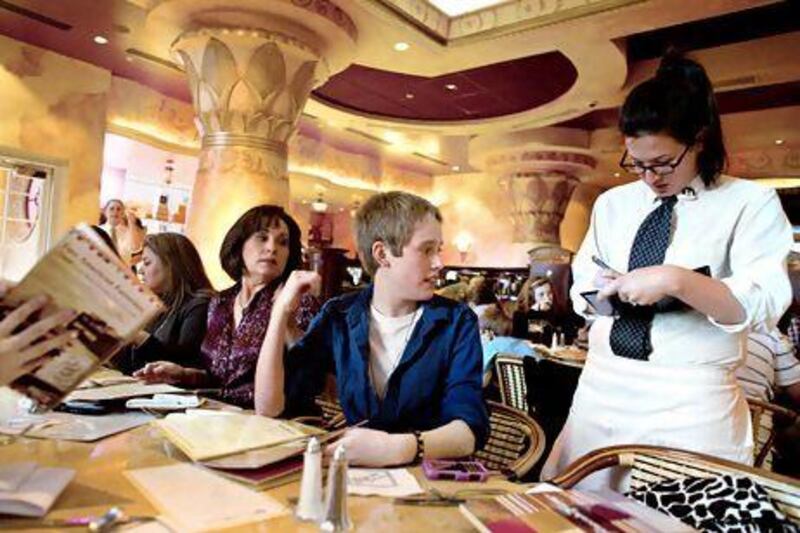Needing to pick up a book for work, I decided to play hookey, stay away from work without permission, and extend my lunch hour for a coveted meal at the popular Cheesecake Factory. I guess you could call what happened next a real "business lunch". But this was not your typical business lunch with a client, rather a lunch alone witnessing management in practice.
As the hostess seated me at a table right next to the main walkway of the restaurant, I noticed the manager instructing one of the waiters. Being a leadership junkie, I could not help but eavesdrop on this conversation as the manager asked the waiter: "What is your favourite cheesecake?"
I think he replied "Banana Cream Cheesecake." To which the manager said: "Good, so you could say: 'I prefer the Banana Cream Cheesecake'" in response to being asked which cheesecake you recommend. It was clear this waiter was having difficulty with a key part of his job, giving diners advice on what to order.
Or: "Have you tried the Bang Bang Chicken, it is one of our most popular dishes?" the manager offered as another example of how to help diners decide from among the hundreds of items on the menu.
As I witnessed this management in action, I was impressed as the manager was doing the basics incredibly well.
He demonstrated workplace intelligence, understanding what was holding his employee back from being his best. Additionally, he worked to nurture his employee's skill and confidence. This manager was taking the time to coach in a very practical way.
One of the best parts of this management in action was that he gave feedforward, rather than feedback. Not once in this conversation did I hear him tell the waiter: "You did this wrong", nor was he focused on a past experience. This whole conversation was about the future and how he could be better, which is the focus of feedforward.
I was about to go and commend him for great management; until I realised he was giving feedforward right in the main walkway through the middle of the restaurant and before the eyes of everyone, including the patrons.
Then I looked around and noticed that many of the other employees had stopped their work and were gazing on as well. You could see embarrassment filling the employee's eyes as he recognised he was on stage.
Watching this made me wonder how much of what was being said was being lost because it was on stage for all to see. What started as a coaching session now looked like a good old-fashioned lecturing for the onlookers. And the impressive action lost its credibility by this one oversight - because of where he was conducting it.
In addition to having a clear future-oriented message (what is said), feedforward has to take into consideration what will help your employees best receive the message (how you say it, and where it is said). In the example from the Cheesecake Factory, the location of the interchange was the overlooked variable. This oversight is not limited to the manager, unfortunately it is common practice for leaders to pull their employees aside in the hallway, address issues in the meeting room, or even rely on the unidirectional communication of email.
Finding the right location matters to giving feedforward. Don't overlook that "where" is as important as "what" and "how".
Tommy Weir is an authority on fast-growth and emerging-market leadership, an adviser and the author of The CEO Shift. He is the founder of the Emerging Markets Leadership Center





